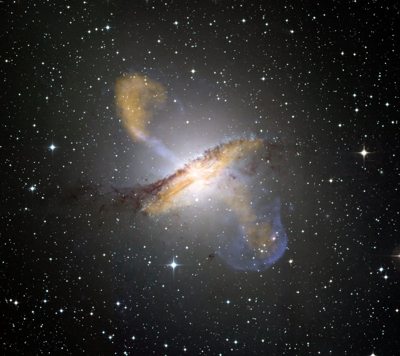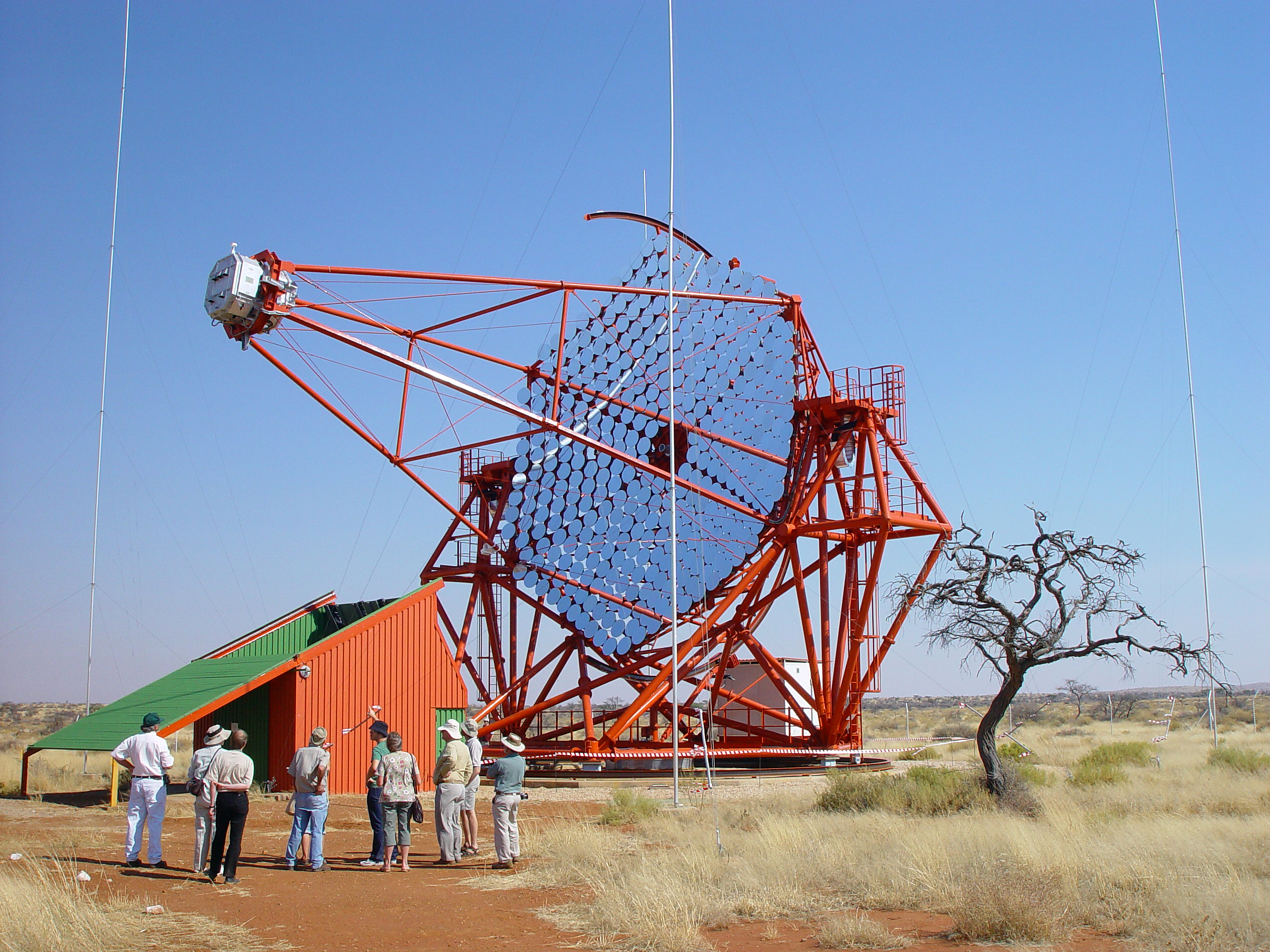Active galactic nuclei are the most energetic objects in the Universe. Around the suspected supermassive black hole they harbour at their centre, charged particles (electrons and protons) may be accelerated to velocities close to the speed of light and ejected in oppositely-directed jets. Centaurus A, located in the constellation Centaurus, is one of the brightest galaxies in the night sky. Its proximity enables unique studies of the active centre and its surrounding. Centaurus A covers an area of the sky more than 100 times the size of the area of the full moon – but this extended structure only glows in radio frequencies with only the host galaxy being visible to the naked eye.
The telescopes of the High Energy Stereoscopic System
(H.E.S.S.) in Namibia have now, for the first time, observed
very-high-energy gamma-ray emission from
Centaurus A. H.E.S.S. consists of four identical
telescopes with 13m mirror diameter, built and operated by an
international collaboration. Ultrafast cameras record the
flashes of weak blue light from the cascades of subatomic particles
that arise when very-high-energy gamma-ray photons interact high in the
atmosphere.
The high-energy gamma radiation from Centaurus A is
so weak that more than a hundred hours of observation time were needed
to obtain an image. The origin of the detected emission
appears to be the centre of the galaxy and the inner parts of the
jets. With the current data, however, it is not yet possible
to identify the exact origin of the emission. These gamma
rays – a trillion times more energetic than visible light – are
produced, it is thought, when particles, accelerated to extreme
energies in the vicinity of a black hole, interact with radiation
fields or the surrounding medium.
The detection of very-high-energy gamma rays from Centaurus A
poses the more general question of whether such emission might be a
common feature of active galactic nuclei. To answer this
question, further observations of Centaurus A and of other
active galactic nuclei are necessary. In that case, future
instruments with higher sensitivity will be able to detect many more
sources than previously anticipated and so better determine the
processes involved.
A very large telescope with a mirror diameter of 30m is already under construction, to improve the H.E.S.S. Experiment's performance, and will start observation in 2010. For the future, the European project Cherenkov Telescope Array (CTA) under study. This gamma-ray observatory will consist of roughly a hundred telescopes, leading to an improvement in sensitivity by a factor 10 compared to the current generation of instruments.
Related links:
- Article - Astrophysical Journal Letters
[http://www.iop.org/EJ/abstract/1538-4357/695/1/L40] - Article - preprint server
[http://arxiv.org/abs/0903.1582] - Plus de details
(News de l'Observatoire de Paris)
[http://www.obspm.fr/actual/nouvelle/mar09/cena.en.shtml] - H.E.S.S. experiment
homepage
[http://www.mpi-hd.mpg.de/hfm/HESS]


